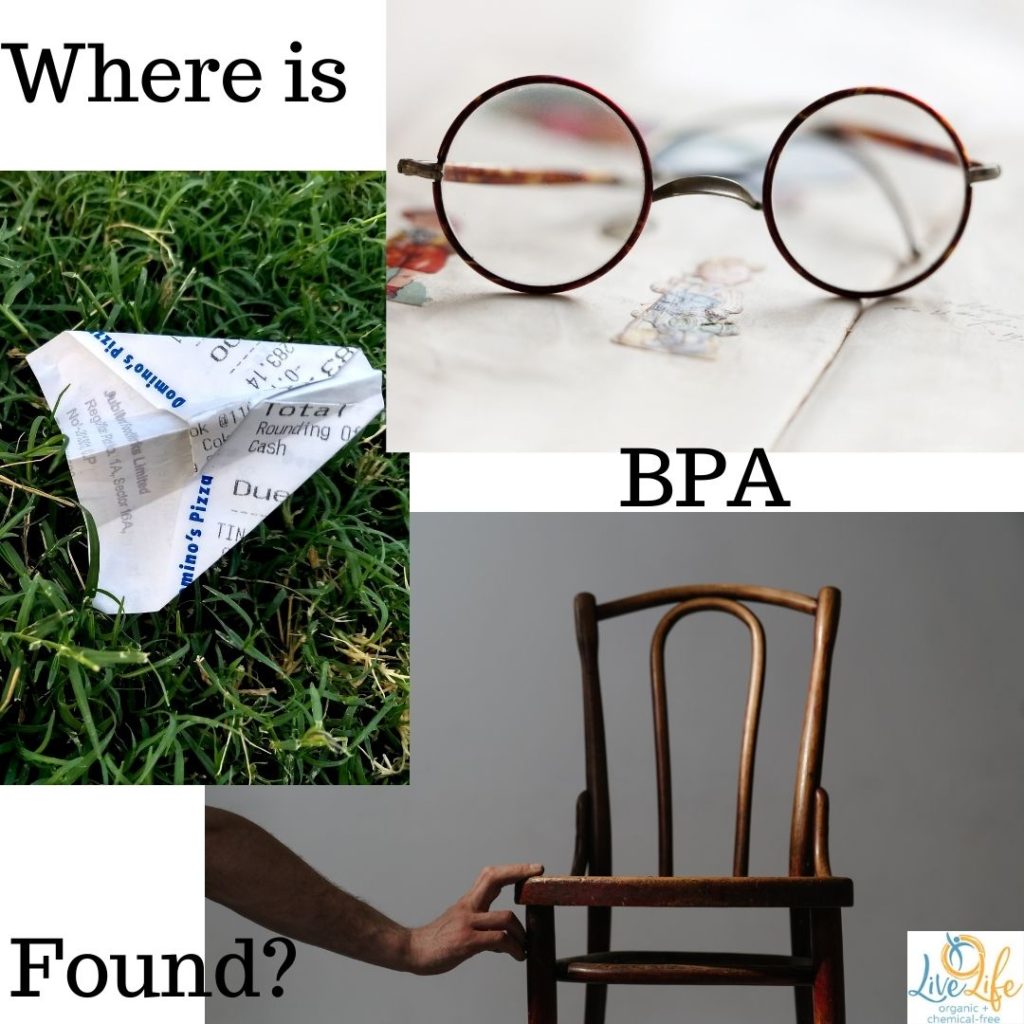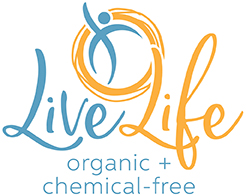
We hear a lot about how BPA is harmful. And that it’s in our food packaging and baby bottles. We see “BPA free” stamped on containers.
However, BPA is found in sooo many more places.
Let’s look at what BPA is, where it’s used, and simple ways get rid of it in your home.
What is BPA?
Bisphenol A (BPA) is a chemical that is widely used to make polycarbonate plastics and epoxy resins. You might be wondering what that is….as was I.
Epoxy resins are a strong adhesive used in fiber optics and electrical circuit boards.
Polycarbonate plastics are nearly everywhere. It’s a clear plastic that you can see through clearly. It can withstand impacts greater than other plastics. Its properties make it easy to be used for injection molding and recycling.
Recycling vs. Environment and Health
Plastic that’s made of BPA is more easily recycled. However, the very process of making the plastic is actually harming our environment – and our bodies.
Further, it takes additional chemicals to make a recycled product.
To recap, it takes chemicals to make plastic the first time, and added chemicals to make it the 2nd (recycled) time. Not good.
This is why we must do better.
Choose healthier.
Educate ourselves deeper.
What Products in Your House (Likely) Have BPA?
I love these videos by Don’t Take That Receipt (www.bpa-free.me) and encourage you to watch. Certain actions put more BPA into our blood stream. They explain how – and do it in a humorous way.
Plus, check out this list of products in your home that likely have BPA:
- Composite woods (furniture, trim, doors)
- Thermal receipt paper
- Eyeglasses
- Light fixtures
- 3D printed models
- Tableware (forks, knives, spoons, plates)
- food and drink containers (water bottles, baby bottles, can linings)
- CDs, DVDs, Blu-Ray disks
- TVs
- impact-resistant safety equipment
- medical devices
- water supply pipes
- food storage containers
- auto parts
- phone and computer cases
- pens
- luggage
… and many more places – too many to name here.
This list might feel overwhelming. There are simple ways to fix this, and choose non-BPA products easily.
Simple Ways to Get Rid of BPA In Your Home
Typical advice out there includes: don’t microwave plastics, avoid eating canned foods, use BPA free baby bottles or containers, and avoid plastics marked with recycle codes 3 or 7 (because they may be made with BPA).
These are great starting points; however, the chemicals (such as BPS) that were developed to replace BPA are just as bad. They’re causing the same health effects.
Errr….
That means you’re spending your hard-earned money replacing your toxic products with other toxic products – a total waste of time and money.
5 Simple Ways to Choose BPA (and BPS) Free
1. Don’t take a printed receipt. Get an e-receipt instead, so that the BPA from the thermal receipt paper isn’t soaking into your skin. Watch this video to learn more (and be entertained! It’s a funny-not funny kinda thing).
2. Buy glass or ceramic. Use glass or ceramic containers to store food in. Examples include a ceramic storage container with glass lid, or a glass container with plastic lid (at least the plastic isn’t touching the food, but it still could be off-gassing into your home so use sparingly).
Store un-acidic foods in stainless steel containers with locking lids. (Tomatoes and other acidic foods don’t store well in metal.) These are great for food transportation as well if they’re sealed.
3. Use metal utensils for cooking. Go with stainless cooking utensils (flippers, spoons, grillware). You can find all-metal or metal with a wooden handle in grocery stores, department stores, and even hardware stores.
4. Solid hardwood furniture. Select furniture that’s made of 100% solid hardwood, and built with non-toxic glues and finishes are the best option for BPA free furniture.
Pro tip: Be sure the dresser backs and drawer boxes are made of 100% solid hardwood.
5. Solid wood building materials. Building products (e.g., flooring, framing, doors, molding, etc.) should be made of 100% solid wood. Solid hardwood, preferably.
Pro tip: This is not to be confused with a hardwood veneer or hardwood plywood; it’s not the same as 100% solid hardwood (but is often mistaken for such).
Your Next Steps
The bottom line is: When you get to choose between plastic and non-plastic items, choose the non-plastic.
Skip the receipt or get an e-receipt, opt for metal, glass or ceramic when possible, and embrace solid hardwood furniture and building supplies.
Together, we can improve our health.
Ready to transform your house into a healthy home?
Check out our healthy home coaching services.
